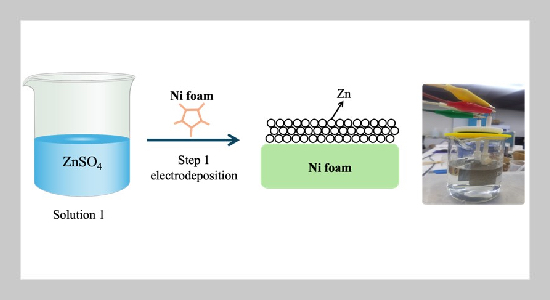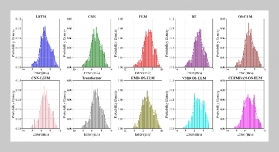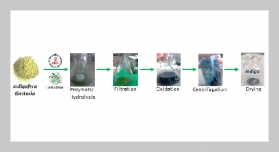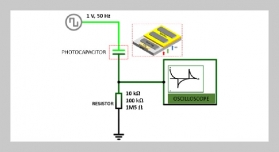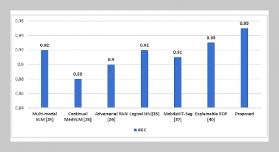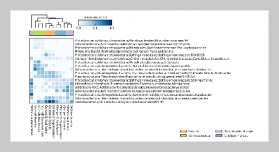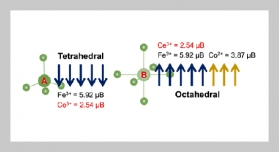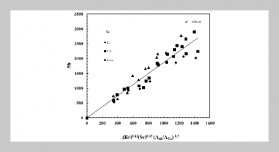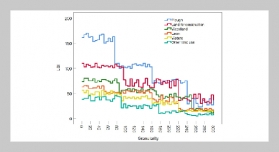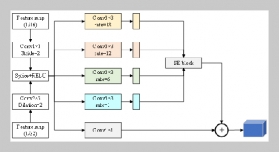- [1] H.S.HayajnehandX.Zhang,(2020) “Logistics Design for Mobile Battery Energy Storage Systems" Energies 13(5): 1157. DOI: 10.3390/en13051157.
- [2] Z. Zhu, T. Jiang, M. Ali, Y. Meng, Y. Jin, Y. Cui, and W. Chen, (2022) “Rechargeable Batteries for Grid Scale Energy Storage" Chemical Reviews 122(22): 16610–16751. DOI: 10.1021/acs.chemrev.2c00289.
- [3] R.-B. Huang, M.-Y. Wang, J.-F. Xiong, H. Zhang, J.-H. Tian, and J.-F. Li, (2025) “Anode optimization strategies for zinc–air batteries" eScience 5(3): 100309. DOI: 10.1016/j.esci.2024.100309.
- [4] J. Fu, Z. P. Cano, M. G. Park, A. Yu, M. Fowler, and Z. Chen, (2017) “Electrically Rechargeable Zinc Air Batteries: Progress, Challenges, and Perspectives" Advanced Materials 29(7): 1604685. DOI: 10.1002/adma.201604685.
- [5] R. Khezri, S. Rezaei Motlagh, M. Etesami, A. A. Mo hamad, F. Mahlendorf, A. Somwangthanaroj, and S. Kheawhom, (2022) “Stabilizing zinc anodes for different configurations of rechargeable zinc-air batteries" Chemical Engineering Journal 449: DOI: 10.1016/j.cej.2022.137796.
- [6] J. B. Goodenough and K.-S. Park, (2013) “The Li-Ion Rechargeable Battery: A Perspective" Journal of the American Chemical Society 135(4): 1167–1176. DOI: 10.1021/ja3091438.
- [7] J. Zhang, Q. Zhou, Y. Tang, L. Zhang, and Y. Li, (2019) “Zinc–air batteries: are they ready for prime time?" Chemical Science 10(39): 8924–8929. DOI: 10.1039/C9SC04221K.
- [8] N. Nitta, F. Wu, J. T. Lee, andG.Yushin,(2015) “Li-ion battery materials: present and future" Materials Today 18(5): 252–264. DOI: 10.1016/j.mattod.2014.10.040.
- [9] M. Winter, B. Barnett, and K. Xu, (2018) “Before Li Ion Batteries" Chemical Reviews 118(23): 11433–11456. DOI: 10.1021/acs.chemrev.8b00422.
- [10] M. Li, J. Lu, Z. Chen, and K. Amine, (2018) “30 Years of Lithium-Ion Batteries" Advanced Materials 30(33): 1800561. DOI: 10.1002/adma.201800561.
- [11] P. Gu, M. Zheng, Q. Zhao, X. Xiao, H. Xue, and H. Pang, (2017) “Rechargeable zinc–air batteries: a promising way to green energy" Journal of Materials Chemistry A 5(17): 7651–7666. DOI: 10.1039/C7TA01693J.
- [12] C. Shunhong, S. Pullteap, and T. Mao, (2024) “Re search Progress and Future Expectations in Anode of Secondary Zinc-Air Batteries: A Review" Applied Science and Engineering Progress: DOI: 10.14416/j.asep.2024.06.006.
- [13] L. Li, Y. C. A. Tsang, D. Xiao, G. Zhu, C. Zhi, and Q. Chen, (2022) “Phase-transition tailored nanoporous zinc metal electrodes for rechargeable alkaline zinc-nickel oxide hydroxide and zinc-air batteries" Nature Communications 13(1): 2870. DOI: 10.1038/s41467-022-30616-w.
- [14] K. Harting, U. Kunz, and T. Turek, (2012) “Zinc-air Batteries: Prospects and Challenges for Future Improve ment" Zeitschrift für Physikalische Chemie 226(2): 151–166. DOI: 10.1524/zpch.2012.0152.
- [15] X. Chen, Z. Zhou, H. E. Karahan, Q. Shao, L. Wei, and Y. Chen, (2018) “Recent Advances in Materials and Design of Electrochemically Rechargeable Zinc–Air Batteries" Small 14(44): 1801929. DOI: 10.1002/smll.201801929.
- [16] O. Haas, F. Holzer, K. Müller, and S. Müller. “Metal/air batteries: the zinc/air case”. en. In: Hand book of Fuel Cells. 2010. DOI: 10.1002/9780470974001.f104022.
- [17] E. Davari, A. D. Johnson, A. Mittal, M. Xiong, and D. G.Ivey,(2016) “Manganese-cobalt mixed oxide film as a bifunctional catalyst for rechargeable zinc-air batteries" Electrochimica Acta 211: 735–743. DOI: 10.1016/j.electacta.2016.06.085.
- [18] D. Liu, Y. Tong, X. Yan, J. Liang, and S. X. Dou, (2019) “Recent Advances in Carbon-Based Bifunctional Oxygen Catalysts for Zinc-Air Batteries" Batteries & Supercaps 2(9): 743–765. DOI: 10.1002/batt.201900052.
- [19] M. Wu, G. Zhang, Y. Hu, J. Wang, T. Sun, T. Regier, J. Qiao, and S. Sun, (2021) “Graphitic-shell encapsulated FeNi alloy/nitride nanocrystals on biomass-derived N doped carbon as an efficient electrocatalyst for rechargeable Zn-air battery" Carbon Energy 3(1): 176–187. DOI: 10.1002/cey2.52.
- [20] J. Ding, P. Wang, S. Ji, H. Wang, V. Linkov, and R. Wang, (2019) “N-doped mesoporous FeNx/carbon as ORR and OER bifunctional electrocatalyst for recharge able zinc-air batteries" Electrochimica Acta 296: 653 661. DOI: 10.1016/j.electacta.2018.11.105.
- [21] R. Khezri, S. R. Motlagh, M. Etesami, P. Pakawanit, S. Olaru, A. Somwangthanaroj, and S. Kheawhom, (2024) “Balancing current density and electrolyte flow for improved zinc-air battery cyclability" Applied Energy 376: 124239. DOI: 10.1016/j.apenergy.2024.124239.
- [22] T. Placke, R. Kloepsch, S. Dühnen, and M. Win ter, (2017) “Lithium ion, lithium metal, and alternative rechargeable battery technologies: the odyssey for high energy density" Journal of Solid State Electrochemistry 21(7): 1939–1964. DOI: 10.1007/s10008-017-3610-7.
- [23] J.F. Parker, C. N. Chervin, I. R. Pala, M. Machler, M. F. Burz, J. W. Long, and D. R. Rolison, (2017) “Recharge able nickel–3D zinc batteries: An energy-dense, safer alter native to lithium-ion" Science: DOI: 10.1126/science. aak9991.
- [24] M. Wang, F. Zhang, C.-S. Lee, and Y. Tang, (2017) “Low-CostMetallic Anode Materials for High Performance Rechargeable Batteries" Advanced Energy Materials 7(23): 1700536. DOI: 10.1002/aenm.201700536.
- [25] J. Yi, P. Liang, X. Liu, K. Wu, Y. Liu, Y. Wang, Y. Xia, and J. Zhang, (2018) “Challenges, mitigation strategies and perspectives in development of zinc-electrode mate rials and fabrication for rechargeable zinc–air batteries" Energy & Environmental Science 11(11): 3075–3095. DOI: 10.1039/C8EE01991F.
- [26] J. F. Parker, J. S. Ko, D. R. Rolison, and J. W. Long, (2018) “Translating Materials-Level Performance into Device-Relevant Metrics for Zinc-Based Batteries" Joule 2(12): 2519–2527. DOI: 10.1016/j.joule.2018.11.007.
- [27] D. E. Turney, J. W. Gallaway, G. G. Yadav, R. Ramirez, M. Nyce, S. Banerjee, Y.-c. K. Chen-Wiegart, J. Wang, M. J. D’Ambrose, S. Kolhekar, J. Huang, and X. Wei, (2017) “Rechargeable Zinc Alkaline Anodes for Long Cycle Energy Storage" Chemistry of Materials 29(11): 4819–4832. DOI: 10.1021/acs.chemmater.7b00754.
- [28] J. Pan, Y. Y. Xu, H. Yang, Z. Dong, H. Liu, and B. Y. Xia, (2018) “Advanced Architectures and Relatives of Air Electrodes in Zn–Air Batteries" Advanced Science 5(4): 1700691. DOI: 10.1002/advs.201700691.
- [29] K. Wang, Y. Zuo, P. Pei, X. Liu, M. Wei, Y. Xiao, J. Xiong, and P. Zhang, (2021) “Zn–Ni reaction in the alkaline zinc-air battery using a nickel-supported air electrode" Materials Today Energy 21: 100823. DOI: 10. 1016/j.mtener.2021.100823.
- [30] K. Wang, P. Pei, Y. Wang, C. Liao, W. Wang, and S. Huang, (2018) “Advanced rechargeable zinc-air battery with parameter optimization" Applied Energy 225: 848 856. DOI: 10.1016/j.apenergy.2018.05.071.
- [31] Y.-P. Deng, Y. Jiang, R. Liang, S.-J. Zhang, D. Luo, Y. Hu, X. Wang, J.-T. Li, A. Yu, and Z. Chen, (2020) “Dynamic electrocatalyst with current-driven oxyhydroxide shell for rechargeable zinc-air battery" Nature Communications 11(1): 1952. DOI: 10.1038/s41467-020-15853 1.
- [32] H. Pan, Y. Shao, P. Yan, Y. Cheng, K. S. Han, Z. Nie, C. Wang, J. Yang, X. Li, P. Bhattacharya, K. T. Mueller, and J. Liu, (2016) “Reversible aqueous zinc/manganese oxide energy storage from conversion reactions" Nature Energy 1(5): 16039. DOI: 10.1038/nenergy.2016.39.
